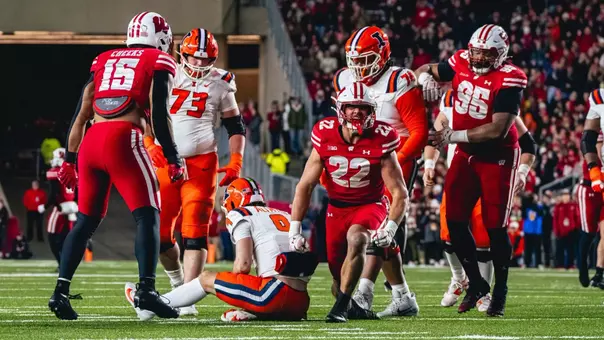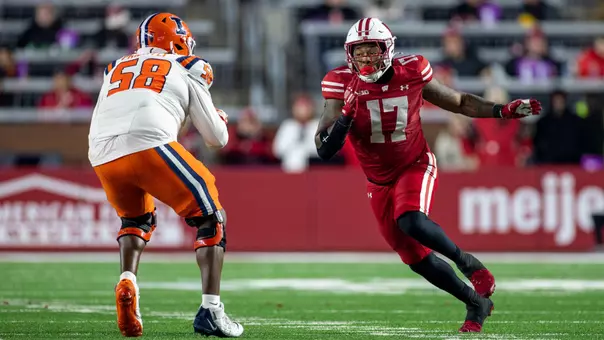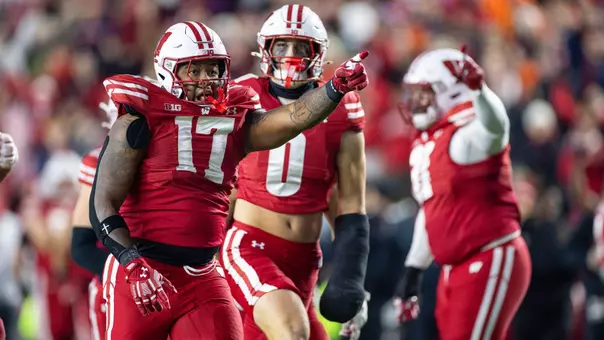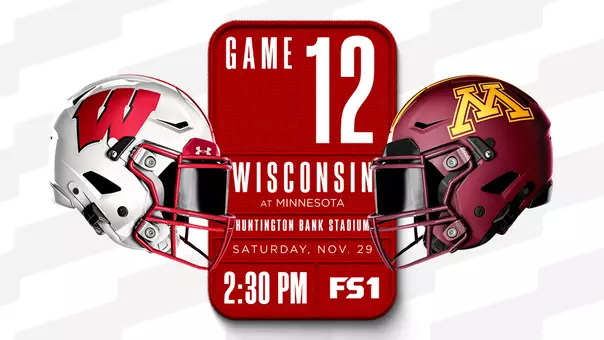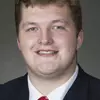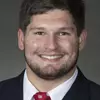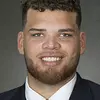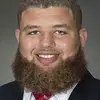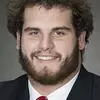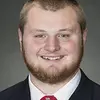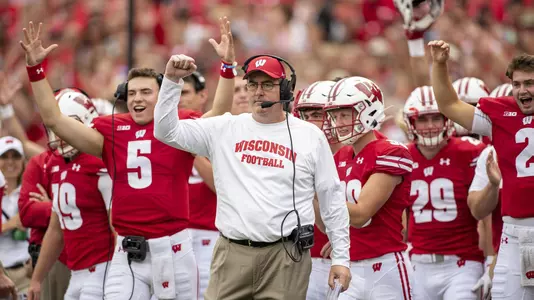
Together Apart: In uncertain times, Chryst keeps focus on the big picture
April 10, 2020 | Football, Mike Lucas
Football a secondary concern for Badgers players and staff separated in era of social distancing
 |
||
|
BY MIKE LUCAS
UWBadgers.com Senior Writer
MADISON, Wis. — Whenever Wisconsin football coach Paul Chryst thinks about the sacrifices made on the "front lines" these days, it has nothing to do with the trenches. Or the line of scrimmage.
Nothing to do with Cole Van Lanen, Logan Bruss or Kayden Lyles on the offensive line. Nothing to do with Isaiahh Loudermilk, Matt Henningsen or Garrett Rand on the defense line.
This is not to imply Chryst hasn't been thinking about his players. Because he has. He has been thinking about all of them daily, checking on them regularly and communicating the old-fashioned way.
On the phone.
But right now, he understands why the national focal point should be on the front lines in the war against the coronavirus; why so many have empathy for first responders and their fight.
It only stands to reason, too, he'd have a heightened sensitivity to health-care workers and what they do since his older sister Cathy was a nurse working in a Nebraska hospital up until about a year ago.
"You hope no matter what any person or any family or any group goes through," he said, "especially times that are so difficult and challenging, you would get something out of it. We'd all be missing an opportunity if we don't learn from it.
"When you see the stories or read about people and what they're doing — the people on the front lines, the people who are responding — there's a ton of stuff you can't help but appreciate. Through bad times and difficult times, there are some extraordinary people that stand out.
"It's impressive what so many are trying to do to help others. When we come out of this, there will be an appreciation for all the things that probably all of us — in different areas — take for granted that we shouldn't."

Chryst, 54, is a coach's kid. He was weaned on football. But there's no playbook for all of this.
During a 20-minute conversation, he threw out several observations from the heart:
"You just feel bad for all the people who are so negatively affected.
"Certainly, I'm not sure what's to come next. Who knows?
"That's what makes it crazy. You just don't know.
"We all have got to help each other get through it."
• • • •
On March 11, the Badgers held their Pro Day at the McClain Center. That night, it was reported that Utah Jazz center Rudy Gobert tested positive for COVID-19. The NBA didn't waste any time in suspending its season indefinitely. And it set off a chain reaction. One domino after another fell.
Earlier that week, Chryst had announced that the opening of spring football practice, originally scheduled for March 10, was going to be pushed back to March 22. Or until after spring break. When the players left campus, they likely recognized that life as they knew it was about to change.
"I don't know that we were going into it thinking that it was going to be to this extent necessarily," Chryst said. "But when they left, when they went to spring break, they probably knew that they were going away for more than one week and I think that helped everyone."
Helped everyone brace for what followed: UW shut down the campus and moved to online instruction. Chryst's players are now living at home and spread throughout the state and country. And there's no timeline on when they will be able to return and regroup as a team again in Madison.
"You try to stay in touch — I wouldn't say day-to-day, but darn near day-to-day — with them and ask, 'How's it going?'" said Chryst, who has a checklist. "The first thing is, 'Are they and their family healthy?' Two, 'How are you negotiating classes?' Three, 'Are you finding a way to stay in shape?'"
While Chryst recognized some disappointment was inevitable — "Guys wanted to have spring practice, they felt good coming out of winter conditioning and they're frustrated" — he also had faith in the resilience of youth and made that point, "All in all, I'd say they're dealing with it really well."
Zoom and Webex have become a part of the football terminology between coaches and players.
Remote video conferencing has been a conduit, a lifeline, a game-changer. Without games.
"With the staff, we've just been all communicating in different ways," said Chryst, speaking for his assistants. "Guys have been using Zoom with players. But in smaller groups, not huge ones. I've been on different calls for different things. I've been on a couple Zoom (sessions) and I've done Webex.
"But I've been doing more calling. Just talking to people. One on one."

One question seems to be universal, whether it has to do with the team or staff, and Chryst expressed it, "How do you best get into a routine or a rhythm? I'm getting there."
The players have iPads and access to film. Each of the Power Five conferences, in accordance with the NCAA, have made concessions to the suspension of on-campus team activities by loosening hourly restrictions on the use of virtual instruction or film review during the academic year.
"But you have to be careful," Chryst cautioned. "Right now, it's more big-picture projects. And for each guy, it's a little different … as much as a freshman needs one thing and a senior needs another thing. You kind of shape it to what they need."
Messaging can still be challenged by logistics. And it falls short of old norm interaction.
"It's probably no different for anyone; I'm sure everyone has challenges right now," Chryst said. "What I miss is not seeing them (the players) and being around them. You do the best you can. You know their worlds. You know when they've got a good setup (back home) and you like that.
"When you're not sure, you wish that you could do more for them."
There are off-campus variables from the academic environment to nutritional maintenance.
"What I've found," Chryst said, "all of our kids and their isolation is different depending on where they live — what part of the country — or who they're around and their household. Everyone's experience going through this is going to be very different.
"I talked to one of our players in California and their (state) enforcement is different from another one of our kids who's in Florida. Jack (Coan) is in Long Island (a coronavirus hot spot in New York). He's managing it. But it's different for everyone and it's the same for everyone, right?
"Some things are the same and then each one has their own individual challenges. One of our people in the football office is in a studio apartment and trying to be judicious and following the (safe-at-home) guidelines. But her experience is different than mine or an assistant in a house with a family."
While at home, the players are expected to do what they can physically to stay in shape. It could be as simple or fundamental as something akin to the Herschel Walker workout routine. The legendary Georgia tailback was known to do 3,500 push-ups and 3,500 sit-ups daily in addition to running hills.
"Ross has done a good job of reaching out to them," Chryst said of strength and conditioning coach Ross Kolodziej. "We're not trying to get (lift) numbers or anything like that. But, 'Do you have a good setup? Share something with others if you're doing something that is a little bit more creative.'"
Chryst revisited his checklist.
"You just want guys to make sure they're safe and healthy and their families are as well — and that they're managing school and they're doing enough stuff on their own," he said. "Once we get back together, it will take some time, but I'm confident about that part, the football part, whenever that is.
"I don't worry about that part."

Asked how much time would be needed to get his team ready for the start of a season, he said, "It all depends on what they've been doing leading up to that. Obviously, you'll need some time. You can't just go and play a game. I've been asking around, 'What is that amount of time?'"
Assuming players are not allowed back on campus for summer drills, then what?
The opinions vary.
Alabama's Nick Saban would like to have two weeks of teaching and training — non-padded workouts — before the start of training camp. USC's Clay Helton and Notre Dame's Brian Kelly believe that they would need a minimum of four weeks of conditioning before a full fall camp, 29 practices.
(The Irish and Badgers are scheduled to play on Oct. 3 at Lambeau Field.)
Virginia Tech's Justin Fuente had a different take. He noted that if teams had just a month to prepare for their opener, and the alternative was not playing at all, everyone would find a way to make it work.
Flexibility is in line with Chryst's thinking: "You remember the days when your guys would go away for summer and you'd meet at fall camp."
Conditioning used to be an integral part of preseason training camps. Former Wisconsin coach John Jardine would test his returning players on the first day of practice by subjecting them to a grueling, long distance run. It told him everything he needed to know about their commitment.
"There are a lot of different ways to look at it," said UW athletics director Barry Alvarez, a Hall of Fame coach. "We've gotten spoiled because we've had the kids all summer. When I played (in the mid-'60s at Nebraska), they hoped you were in shape when you got back on campus after the summer. Most players went home, worked out on their own and they came back and they were ready to go.
"Or, at least, you hoped they were ready to go."
One of Chryst's strengths is his grounded, measured approach.
"Take the virus out of it. None of us wants to put the players in an at-risk situation, nor would we, certainly not knowingly," Chryst said. "We'll get all the information. The kids are pretty good that way. You can talk to them and you'll get their feedback on it.
"You have to be smart on how you re-enter."
And when that time comes?
"For us, whenever we come back, you have to take the first week for sure to gauge where your people are," he said. "Getting into shape is one thing, but your strength gains might not be the same. Whatever the time is, you've got to have a plan for it and make it work."
On whether he has envisioned playing games in empty stadiums, Chryst said, "I haven't gone there yet. No, I haven't envisioned that. I am confident that no one is going to do anything that puts people at risk, or more at risk, or heightened risk. Obviously, you follow it all. You read about it.
"But I haven't really put a ton of thought into that."
Instead, he has focused on being a homebody. Like everyone else.
Paul and his wife Robin have adjusted to having all three kids under their roof again. JoJo, a Pitt grad, is a student physical therapist at UW Health and studying for her boards. Katy is completing work on her master's from Illinois. Danny is doing postgraduate work at Northwestern and schooling online.
"It's weird, it's different, but it's not bad — everyone has got projects," Chryst said. "You feel like you're stealing time that we wouldn't have had. Especially with our kids and their ages right now, in essence, they're out of the house. With them back, you realize this is pretty unique.
"That part has been awesome and you do have to seize those moments.
"Now, with guys on the staff with young kids, that's a whole different world."
When he isn't taking walks with Robin, he has a treadmill, an elliptical and Netflix. Chryst has a penchant for watching "Survivor" or "Narcos" while working out.
"One thing you can't say is that you don't have enough time to work out," he joked.
Meanwhile, he has more time for his passion. Chryst is a film junkie.
"You're doing some of the stuff you normally do (in April)," he said of breaking down the X's and O's. "I've been studying opponents for next year.
"There's some self-scout stuff from the last couple of years. And you can still go back and watch those and pick up things. You just have to be careful in not overplanning or misrepresenting.
"But right now, I'm absolutely planning for (the season) and then you'll react accordingly and adjust when things need to be adjusted."
Like everyone else.

